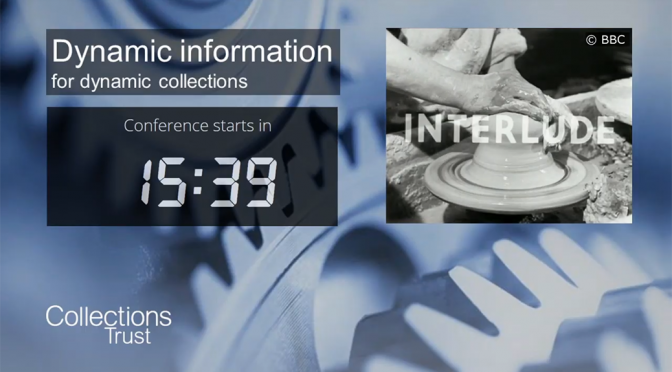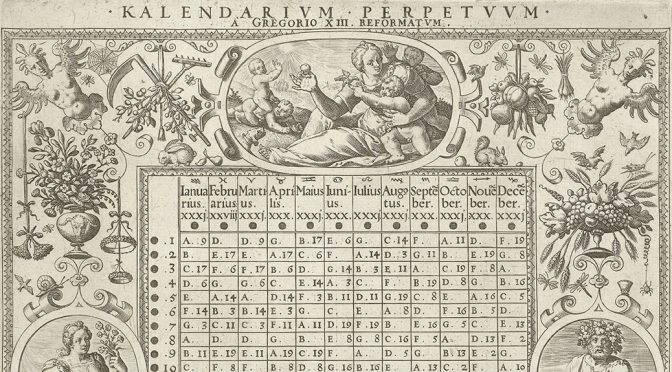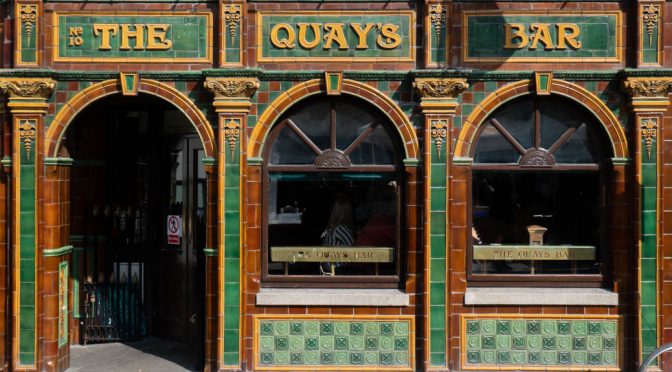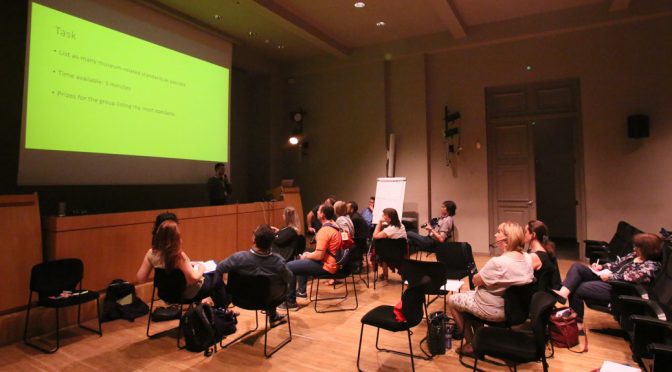Since I last wrote about EODEM (the Exhibition Object Data Exchange Model), three months ago, we have been busy. The net result is a new draft of the standard (now available via CIDOC’s new document repository, by the way.) Whilst this is not yet final, it marks a significant evolution of the draft, and we don’t expect to make too many more changes.
Continue reading EODEM update 2All posts by Rupert
Towards a national collection
And no, I don’t mean TaNC …. I’ve been interested in Collection Trust’s plans in this area for some time; these are brought into sharper relief by their recent announcement that they’ll be turning Culture Grid off soon. This post is as much for my use as anything else: I’m using it to pull together resources related to Collections Trust’s work related to museum data aggregation. I expect I’ll keep it updated as I find more.
Continue reading Towards a national collectionEODEM update 1
I was very pleased to hear EODEM referred to last week,1 during the third Balboa Park Online Collaborative webinar on Dreaming of a New Collections Management System (a really interesting series, well worth watching if you haven’t already, and have the time). But then, as it was Richard Light speaking, and he’s been hard at work recently on building an EODEM importer / exporter for MODES, perhaps it wasn’t so surprising – but this made we realise it’s time to share where we are with the EODEM project.
Continue reading EODEM update 1- EODEM is the CIDOC Documentation Standards Working Group’s project to create an Exhibition Object Data Exchange Model, and see it implemented in collections management systems worldwide – but then, you knew that. [↩]
What is EODEM?
If you follow me on Twitter, you may have noticed that I’ve been very quiet over the last year: I haven’t really been able to face social media since the pandemic started. But when I have tweeted, it’s usually been about conferences – and I’ve been making much of something called EODEM. This post is to explain what EODEM is, and why I think it’s important.
Continue reading What is EODEM?Collections Trust 2020: systems, interoperability and aggregators
Conferences have not been the same this year: I’ve particularly missed the opportunity to catch up with friends and colleagues, and the random conversations and encounters in queues that compensate for the quality of the coffee one is waiting for. We have been left with the formal proceedings, and I wanted to say something about the papers presented at the (comparatively) recent Collections Trust conference, held online over two half-days on 1 and 2 October 2020.
Continue reading Collections Trust 2020: systems, interoperability and aggregatorsThe problem with dates
This is prompted by a question that arose during a meeting for ArtUK’s project to pilot the automatic updating of data on their website by speaking directly to the databases of contributing organisations – but it’s not really about that, fascinating and welcome as the project is. At some point in the discussion the question of dates came up, and this reminded me of something that’s been bugging me for some time: have museums been recording their dates properly? It’s a matter I raised a couple of years ago in the users’ email list for the collections management system I use at the National Gallery, Gallery Systems’ TMS – where it was met with a resounding silence.
Let me explain. Most museum collections management systems allow users to record dates in two ways: as free text (sometimes called a ‘display date’), which could be as vague as ‘early fifteenth century’ or as specific as ‘2 February 1976’; and as a properly machine-readable date (or dates), following a standard format. The format that they use is almost always that mandated by ISO 8601, Data elements and interchange formats – Information interchange – Representation of dates and times.
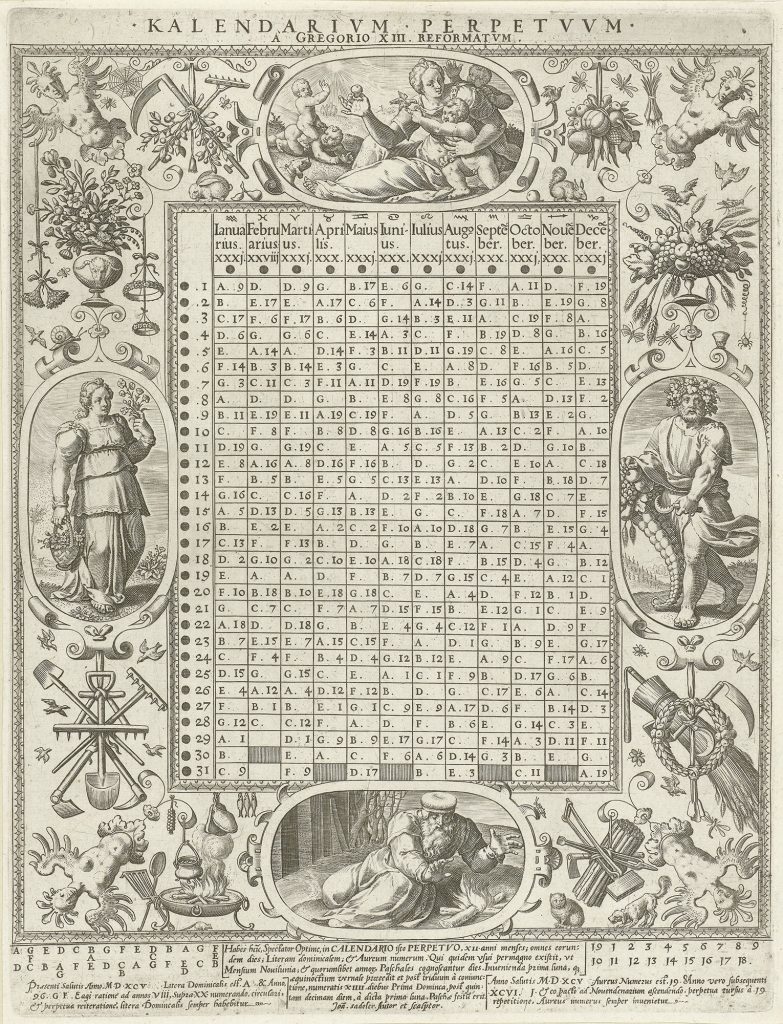
 Public domain.
Public domain.The formatting element of ISO 8601 is quite simple; of the variants it offers, the one most often used in museum software is the basic YYYY-MM-DD (which can be reduced down to as little as YYYY for less precise dates). The problem is to do with calendars. ISO 8601 specifies that dates should be recorded using the Gregorian calendar – the calendar in use in much of the world today, first introduced in some countries on 15 October 1582 as a result of reforms instigated by Pope Gregory XIII, and designed to reduce the disjunction between astronomical time and calendar time that had crept into the previous Julian calendar because of the way that leap years were calculated: the Julian calendar was by then 10 days adrift of astronomical time. In other words, when the Gregorian calendar was first adopted, 4 October 1582 was, in some countries, immediately followed by 15 October 1582. (The days of the week, however, ran on in their normal sequence.) The calendar was adopted across the world gradually: it only came into use in the British Isles in 1752, when 2 September 1752 was followed by Thursday 14 September 1752 (after me, now: ‘Give us our eleven days!’)
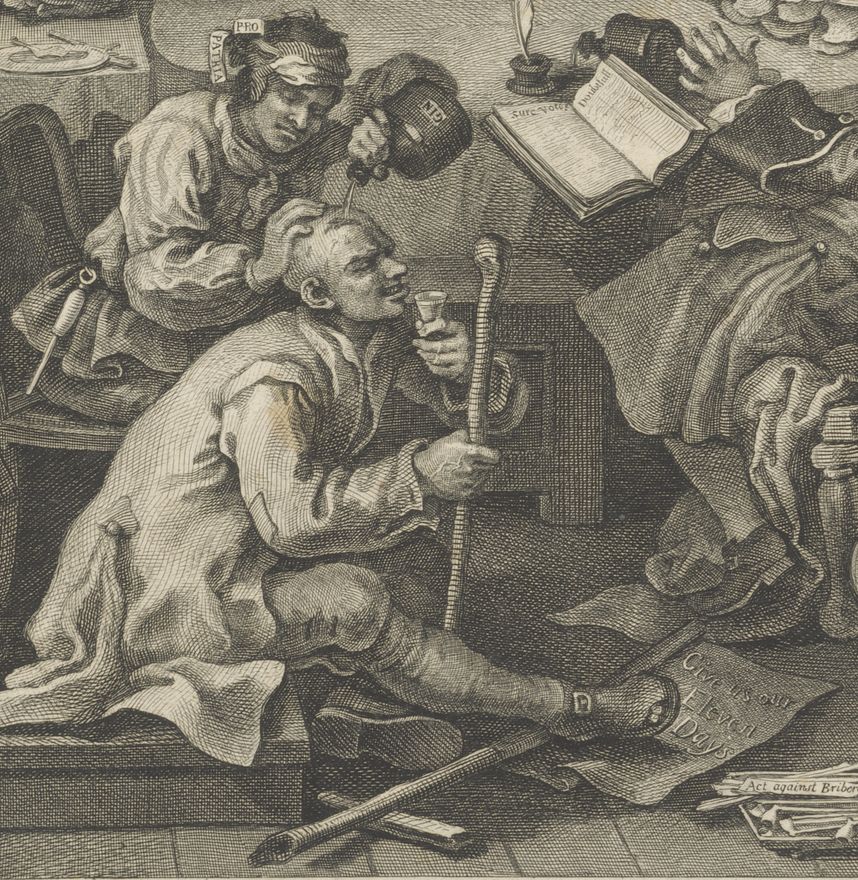
But what about dates before 15 October 1582? According to ISO 8601, these can only be recorded ‘by mutual agreement of the partners exchanging information’; they should be recorded using the proleptic Gregorian calendar, which simply extends the Gregorian calendar back in time before its creation. This means that the precise dates of events that took place in the past should be shifted accordingly when entered into museum databases, if they are actually to adhere to the standard they profess to use. For example, Titian’s Bacchus and Ariadne arrived at its destination, Ferrara, on the Julian calendar date of 20 January 1523 (or thereabouts) – or 30 January in the proleptic Gregorian calendar.
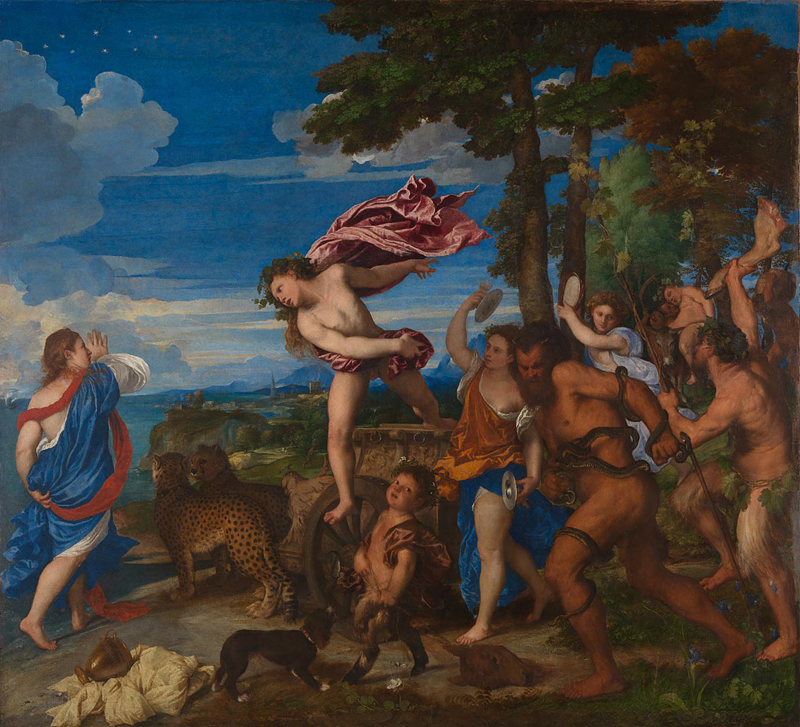
 This work is licensed under a Creative Commons Attribution-NonCommercial-NoDerivatives 4.0 International License.
This work is licensed under a Creative Commons Attribution-NonCommercial-NoDerivatives 4.0 International License.I’d like to ask anyone reading this who works in museum documentation: are you really recording pre-Gregorian dates in ISO 8601-formatted fields using the proleptic Gregorian calendar – or are you just using the Julian calendar, and formatting your dates to look like ISO ones?
I can understand why museums might not be implementing ISO 8601 properly. For one thing, it means that the proleptic Gregorian date needs to be calculated every time you enter a Julian date. For another, it leads to problems when we consider anniversaries. The Wikipedia article on the Gregorian calendar discusses the supposed coincidence of the deaths of both Cervantes and Shakespeare on 23 April 1616 – although, as Spain at that time used the Gregorian calendar, and England the Julian, Cervantes actually died ten days before Shakespeare, the interval by which the two calendars diverged in 1616. But in 2020, we will mark the anniversary of Shakespeare’s death on its calendar date, 23 April, and not 404 years (of 365/366 days) after it actually took place, on 3 May. In other words, our anniversaries are out of step with our calendars if the events being commemorated occurred under the Julian calendar. And museums, as memory institutions, do like to mark anniversaries – even more so when there are social media accounts to feed with regular content. To return to the example of the Titian painting I mentioned earlier: when should we tweet the anniversary of its arrival in Ferrara – on 20 January (Julian date) or 30 January (ISO 8601 date)?
But if we stick with Julian calendar dates entered using the ISO YYYY-MM-DD format, we’re setting ourselves up for further problems when we come to calendars where the new year doesn’t fall on 1 January. Many European states – including England and, before 1600, Scotland – marked the new year on Lady Day (the Feast of the Annunciation, 25 March). So in England, for example, 31 December 1602 was followed immediately by 1 January 1602, and 24 March 1602 by 25 March 1603. If we were to write these dates using the ISO format, and list them in chronological order, we would end up with the sequence:
- 1602-12-31
- 1602-01-01
- 1602-03-24
- 1603-03-25
Why does this matter? First of all, there’s the problem of putting chronological dates in order: YYYY-MM-DD dates should sort nicely, as they’re arranged in order from largest to smallest component. But they don’t, if the year doesn’t begin neatly at YYYY-01-01. Secondly, there’s ample scope for confusion: James VI of Scotland succeeded to the throne of England as James I, bringing about the Union of the Crowns, upon the death of his cousin Elizabeth I late on 24 March 1603 by the Scots calendar – but 24 March 1602 by the English. (To resolve the ambiguity, dates are sometimes written using the conventions ’24 March 1602/3′, or ’24 March 1602 Old Style (O.S.)’ / ’24 March 1603 New Style (N.S.)’.) In the United Kingdom, all this – the date of the new year and the divergence between the Julian and Gregorian calendars – was resolved by the Calendar (New Style) Act 1750.
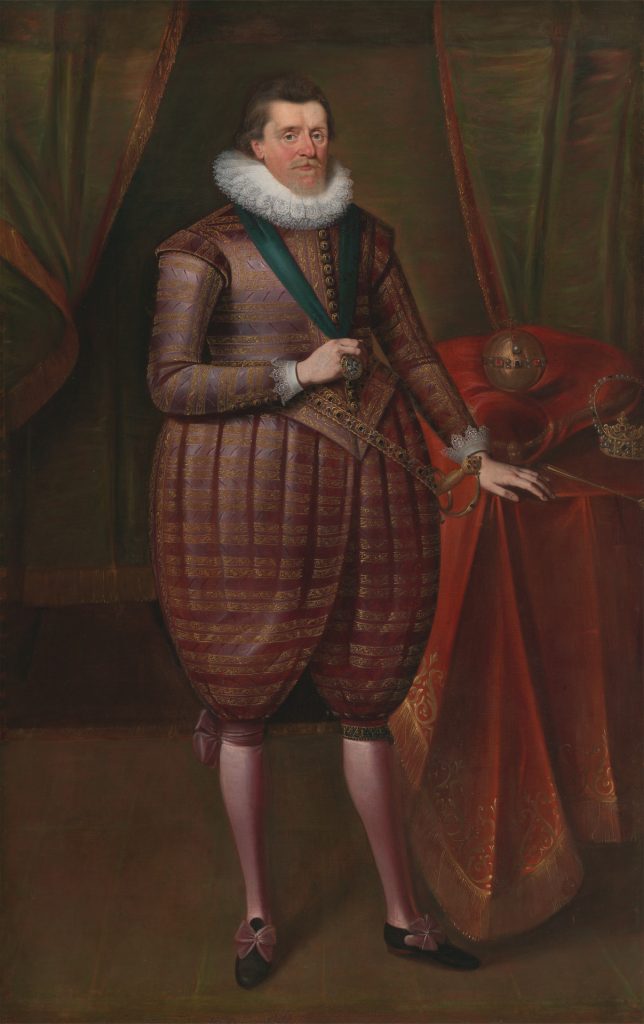
And – if you’re not already banging your head on your desk in despair – ISO 8601 also creates a discrepancy with dates BC. The Julian calendar, as conventionally reckoned (remember, the Romans didn’t know to mark the birth of Christ in the year in which it occurred) included no year 0: 1 BC was followed immediately by AD 1. This is the convention followed in most historical texts. But the proleptic Gregorian calendar as used by ISO 8601 includes a year 0, with dates before that given negative numbers, and dates after (dates AD) given positive ones. So Julian 1 BC is in fact proleptic Gregorian 0, Julian 2 BC is proleptic Gregorian -1, etc.
So I can understand why museums might not actually be adhering to the standard that they profess to be using when they record dates. And with that happy thought I’ll sign off. For those of you who like to do things the old-fashioned way (and have some Italian), I find Adriano Cappelli, Cronologia, cronografia e calendario perpetuo: dal principio dell’era cristiana ai nostri giorni, 7th edn, Manuali Hoepli (Milan: Ulrico Hoepli, 1988, and reissued subsequently), ISBN 88-203-2502-0, a useful compendium of calendar-related information. My copy came with a calendar conversion program on 3.5″ floppy disk (remember them?), which I can’t get to run on Windows 10; fortunately, there’s now a superfluity of calendar converters online – John Walker’s, available here, has the added advantage of downloadable code that you can install locally should you wish.
Now, back to working out how to record fifteenth-century dates from Florence (using the Julian calendar and starting the New Year on Lady Day) in my collections management system.
Updates
- 17 February 2020: erroneous references to ISO 8901 corrected to ISO 8601 (thanks to @gndnet).
- 17 February 2020: erroneous reference to a 3¼″ floppy disk corrected to 3.5″ (thanks to Michael Comiskey).
- 18 February 2020: there’s a more extensive discussion of these issues in Miranda Lewis, Arno Bosse, Howard Hotson, Thomas Wallnig & Dirk van Miert, ‘II. Standards: Dimensions of Data. 3. Time’ in Howard Hotson & Thomas Wallnig (eds.), Reassembling the Republic of Letters in the Digital Age: Standards, Systems, Scholarship (Göttingen: Göttingen University Press, 2019) DOI:10.17875/gup2019-1146, pp. 97-117 (thanks to Arno Bosse).
Dublin: kiosks, linked data, and the Dead Zoo
This April I was in Dublin for a few days, speaking at Collective Imagination 2019, the conference for users of TMS museum collection management software. This is a brief post about the conference and my lecture, and a visit to the Dublin Museum of Natural History.
Continue reading Dublin: kiosks, linked data, and the Dead Zoo
Send me your loan forms!
We’re coming up to the autumn conference season, and once again I’ll be going to the annual conference of CIDOC, the international committee for documentation that forms part of ICOM, the International Council of Museums – this year it’s in Heraklion, in Crete. Before the conference proper, I’ll be running a workshop on Sunday 30 September, along with colleagues from CIDOC’s Documentation Standards Working Group, for developers of digital collections management systems, focussed on the development of ‘EODEM’, an Exhibition Object Digital Exchange Mechanism.
We plan to kick off the development of a mechanism that lets users of different collections management systems share as easily as possible the information about their objects, and those objects’ requirements, that is needed when objects are lent from one institution to another. The lender should be able to just press a button to share the data, and the borrower just press another to import it into their system. This would eliminate a huge amount of the retyping that goes on when different museums exchange information about objects that they are lending and borrowing.
First, though, we need to identify the information that museums need to share. We’ll base the core information that identifies and describes the objects themselves on an existing standard, Object ID; but we need to know what information museums needs to share about borrowed objects’ requirements.
And here’s where I hope you can help us: the easiest way to do this will be for us to look at the information different museums request when they borrow objects. This is often requested using a ‘loan object information request form’, which the lending museum is asked to fill in for each object, giving its environmental needs, minimum security levels, etc. We’d like you to send us a copy of your museum’s ‘loan object information request form’ (blank, of course: we really don’t need sensitive individual object information, just the empty form so we can understand what you need to know). Drop me a line in the comments box at the foot of this page, and I’ll email you an address you can send the form to.
Once we have the forms, my colleagues and I will collate them all, draw up a list of the different pieces of information museums are asking for, and pass it to the system developers to incorporate into EODEM.
If all goes according to plan, future generations of registrars, exhibition organisers, and documentation staff will be forever in your debt!
The Encyclopaedia of Museum Practice
I’ve just (well, the month before last – but in terms of my writing on this site, that counts as ‘just’) got back from Tbilisi, the capital of Georgia, where I was attending the 2017 annual conference of CIDOC, the international organisation for those working in museum documentation.1 As well as a fascinating range of papers from many countries, visits to Georgian museums (and opportunities to sample Georgian wines), I facilitated a couple of sessions dedicated to the CIDOC Documentation Standards Working Group (DSWG)’s Encyclopaedia of Museum Practice – ably helped by my co-facilitators, Maija Ekosaari and Jan Behrendt, and filling in for the DSWG’s co-chair, Jonathan Whitson Cloud.
Continue reading The Encyclopaedia of Museum Practice
- I’ve also written about the 2014 CIDOC conference, in Dresden, and the 2016 conference in Milan. [↩]
Magnificence: a very short introduction
I was shocked to realise that I received my Ph.D. twenty years ago this year. Because the subject I chose – an examination of the writings on art and architecture of the Bolognese notary and author Giovanni Sabadino degli Arienti (c. 1443-1510) – divided neatly into two halves, it was never really book-shaped, and so the only real publications I’ve managed to extract from it over the years were my Apollo article on looking at coins (which I wrote about recently here),1 and two articles in books, based on the second half of the thesis, which dealt with the concept of magnificence.2
Continue reading Magnificence: a very short introduction
- Rupert Shepherd, ‘A Letter Concerning Coins in Sixteenth-century Ferrara’, Apollo, Volume CXLIX, Number 443 (New Series) (January 1999), pp. 40-43; full text. [↩]
- Rupert Shepherd, ‘Giovanni Sabadino degli Arienti and a Practical Definition of Magnificence in the Context of Renaissance Architecture’, in Mary Rogers and Francis Ames-Lewis eds, Concepts of Beauty in Renaissance Art, (Aldershot: Ashgate, 1998), pp. 52-65; Rupert Shepherd, ‘Republican Anxiety and Courtly Confidence: The Politics of Magnificence and Fifteenth-Century Italian Architecture’, in Michelle O’Malley and Evelyn Welch, eds, The Material Renaissance: Costs and Consumption in Italy, c.1400-1650, (Manchester: Manchester University Press, 2007), pp. 47-70. [↩]


